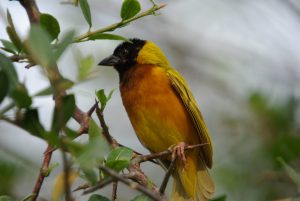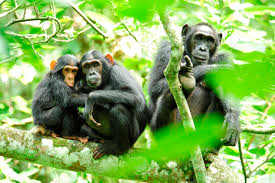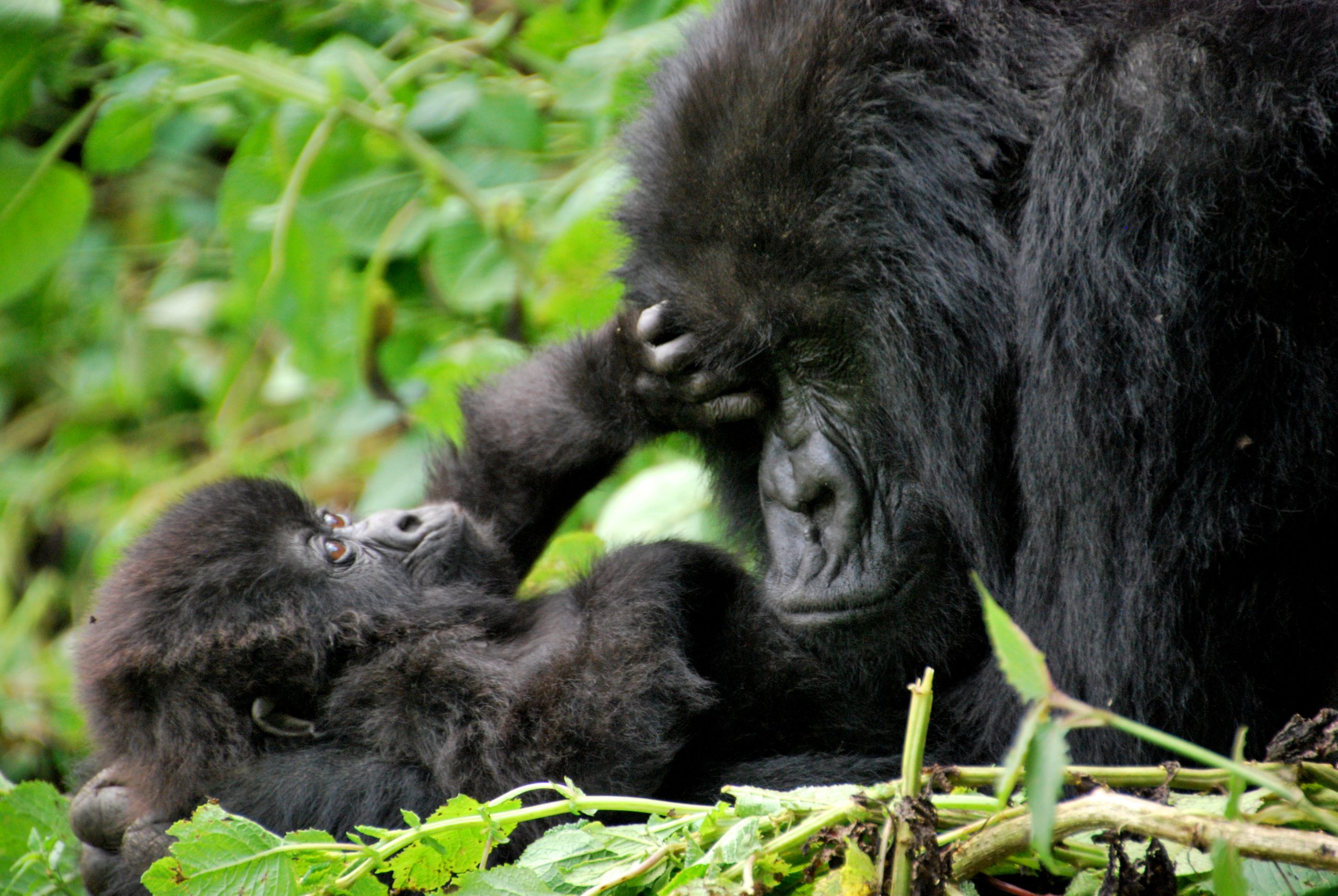7 Best Things To Do In Kibira National Park
The 7 best things to do in Kibira National Park are viewing the breathtaking scenery, game drives to see the diverse wildlife, primates watching, hiking trails, cultural immersion, bird watching and conservation efforts.

Kibira national park is located in northern Burundi in East Africa and covers a space of four hundred square kilometer. The park is characterized by its mountainous terrain with altitudes ranging from one thousand four hundred to two thousand six hundred meters above the sea level.
It forms part of the larger Nyungwe-Bwindi-Mgahinga Forest ecosystem, connecting protected areas in Burundi, Rwanda and Uganda. It is known for its diverse flora and fauna, with lush montane rainforests covering a significant portion of the park.
Kibira is the home to various wildlife species including primates like chimpanzees and colobus monkeys, as well as a variety of birds species. It is also vital for water conservation serving as the source of several rivers and streams that contribute to the region’s hydrology.
The park provides important ecological services contributing to the region’s biodiversity and supporting local communities. It offers opportunities for eco-tourism attracting visitors interested in nature and conservation.
1. Scenery Viewing At Kibira National Park
Kibira National Park’s breathtaking scenery is characterized by its diverse and captivating natural features. The lush verdant landscapes encompass expansive forests, rolling hills and cascading waterfalls, creating a visually stunning environment. The park is a mosaic of vibrant green with dense vegetation that provides a serene backdrop for visitors.
The varied topography of Kibira include deep valleys, meandering streams, and clear mountain springs, enhancing the overall aesthetic appeal. Whether you’re trekking along the park’s hiking trails or taking in panoramic views from elevated points, the scenery is a captivating blend of untouched wilderness.
Kibira’s breathtaking scenery is not only visually appealing but also evokes a sense of tranquility and connection with nature. The pristine beauty of the park allows visitors to immerse themselves in a scenery environment providing a welcome escape from the hustle and bustle of daily life.
In additional to greenery, the park is home to unique geological formations adding an extra layer of fascination for those who appreciate the wonders of the natural world. Overall, the breathtaking scenery of Kibira National Park creates an immersive and memorable experience for anyone seeking to reconnect with nature in truly captivating setting.
2. Diverse Wildlife At Kibira National Park
Kibira National Park is a place for biodiversity offering visitors a compelling reason to explore its diverse wildlife featuring a rich array of flora fauna. Visitors can explore lush rainforests inhabited by various species including primates like chimpanzees and monkeys as well as numerous bird species.
The park’s biodiversity provides a unique opportunity for nature enthusiasts to experience the beauty and ecological richness of Burundi’s nature Within Kibira National Park you will encounter an intricate ecosystem where dense forests harbor not only chimpanzees but also other primates such as black and white colobus monkeys.
The park’s avian diversity is equally captivating with a multitude of bird species adding vibrant colors and melodies to the environment. Exploring Kibira offers a chance to witness the interconnectedness of various species making it a compelling destination for those seeking an immersive wildlife experience in the heart of Africa.
3.Primates Watching At Kibira National Park.
Kibira National Park offers a unique and enriching experience for primate enthusiasts. The park is a home to populations of chimpanzees providing a captivating opportunity for primate watching.
Guided tours offer a chance to observe these intelligent and social creatures in their natural habitat thus creating a memorable and educational wildlife encounter. The lush surroundings and diverse flora enhance the overall experience making primate watching a compelling reason to visit Kibira National Park.
4.Hiking Trials At Kibira National Park.
Kibira National Park beckons adventure seekers with its extensive network of hiking trials, offering a thrilling exploration of diverse landscapes. These trails wind through lush rainforests, revealing hidden waterfalls, vibrant flora and captivating wildlife.
Whether you are a seasoned hiker or casual nature lover, Kibira’s well-maintained paths cater to various skill levels providing a chance to discover the park’s natural beauty while enjoying a healthy outdoor activity. The hiking trials at Kibira National Park promise an immersive and rewarding experience for those who crave both adventure and connection with the nature.
5.Cultural Immersion At Kibira National Park.
Cultural immersion at Kibira National Park involves engaging with the local communities surrounding the park such as the Batwa people by interacting with their customs, traditions and daily life. Visitors gain a deeper understanding of the region’s rich cultural heritage and this experience enhances the overall journey offering a more holistic perspective beyond the natural beauty of the park.
When visitors embrace cultural immersion at Kibira National Park, they have the opportunity to participate in activities like guided community tours, traditional dances and sharing meals with local families. This not only fosters a meaningful connection with the Batwa community but also provides insights into their history and sustainable practices.
Engaging in these experiences helps to appreciate the interconnectedness of culture and nature making the visit to Kibira National Park a more enriching and memorable adventure.
6.Bird Watching At Kibira National Park.
Kibira National Park is a haven for bird watchers boasting a diverse avian population with over 200 species. The lush forests and varied habitats create an ideal environment for birding enthusiasts. Exploring the park offers opportunities to spot unique and colorful birds including endemic species like Ruwenzori Turaco.
Bird watching at Kibira allows visitors to connect with nature, appreciate biodiversity and enjoy the thrill of identifying a wide array of feathered inhabitants in their natural habitat.


7.Conservation Efforts At Kibira National Park.
Visiting Kibira National Park allows individuals to actively support and witness ongoing conservation efforts. The park is a crucial area for biodiversity conservation, home to various endangered species and essential ecosystem.
By contributing to ecotourism, visitors directly aid conservation initiatives such as ant-poaching measures and habitat preservation. This involvement not only helps to protect the unique flora and fauna of Kibira but also fosters a sense of responsibility and awareness showcasing the positive impact tourism can have on preserving our natural heritage for future generations.
When To Visit Kibira National Park
The best time to visit Kibira National Park is during dry season which typically occurs from June to September with the temperatures ranging from 20 to 28 degrees Celsius [68 to 82 degrees Fahrenheit] the weather is more predictable and wildlife sightings are more common as animals gather around water sources. It’s advisable to avoid the rainy season from October to April when rainfall can make the roads difficult to navigate and some areas may be inaccessible
Accessing Kibira National Park
The commonest means of transport to access Kibira National Park is road transport and air transport. Alternatively, visitors often use cars either private or rented as well as guided tours or local transportation options like buses or taxis to reach the park entrance.
By road, Kibira National Park is easily accessible from Bujumbura, the capital city of Burundi which is approximately fifty kilometers (31 miles) to the south and it takes about one and a half to two hours depending on road conditions enjoying a scenic drive through the picturesque countryside.
Where To Stay While at The Park
There are different types of accommodation at Kibira National Park and that is luxury, mid-range and budget.
- Luxury
Luxury accommodations in Kibira National Park typically offers high amenities, personalized services and comfortable stay amidst the natural surroundings. These include lodges and safari camps that provide a luxurious experience.
The following are the examples of luxury accommodation;
Kibira Forest Lodge
This is known for its upscale facilities, gourmet dining and guided wildlife experiences. These accommodations often prioritize eco-friendly practices and provide a tranquil environment allowing guests to enjoy the beauty of Kibira National Park in style and comfort.
The distance between the lodge and the park can vary based on the specific location of the lodge and the entrance to the park, typically its within a few kilometers maybe five to ten kilometers and the travel time would depend on the road conditions and mode of transport but its usually a short drive ranging from fifteen to twenty minutes.
Bururi Forest Nature Reserve Lodge
This establishment combines opulent amenities with a focus on preserving the local environment. Guests can expect spacious and well-appointed rooms plus personalized services. The lodge may also offer exclusive safari experiences, guided nature walks and cultural interactions to enhance the overall luxury experience while immersing visitors in the unique biodiversity and cultural richness of the region.
These high-end accommodations often prioritize sustainability and contribute to the conservation efforts of Kibira National Park. The distance between the Park and the lodge is 20-30 kilometers and the travel time would depend on the road conditions and transportation method but its generally a drive of around 45 minutes to an hour.
-
- Mid-range Accommodation
- This offers a balance between comfort and affordability; these options provide decent amenities without the extravagance of luxury lodges. The following are the examples of mid-range accommodation.
Kibira Forest Camp.
The camp typically provides comfortable tents or cabins with basic amenities offering a more affordable yet easy stay. Guests can enjoy the natural surrounding and partake in guided activities such as bird watching or nature walks without high cost associated with luxury lodges.
The distance between the camp and the park can vary depending on which entry or specific locations you are referring to within the park. Travel time would depend on the mode of transportation and road conditions but its usually a short drive ranging from ten to twenty minutes at most.
Kirundo Lodge
This is also a mid-range choice offering comfortable rooms and a variety of services suitable for travelers seeking a balance between affordability and comfort. These are often popular among budget conscious travelers who still want a pleasant experience while exploring Kibira National Park and its surroundings.
The distance between the lodge and the park is five to ten kilometers and this can vary depending on the specific location of the lodge and the entrance of the park. The time would also depend on the road conditions and transportation method but its generally a short drive perhaps fifteen to thirty minutes.
3.Budget Accommodation
This provides basic facilities at an affordable cost making them suitable for the travelers on a tight budget. An example is Kibira Campsite offering simple camping facilities for those who prefer a more rugged and economic experience.
Another example is Kibira hostel that provides budget-friendly dormitory-style accommodation with shared amenities. These establishments cater to travelers who prioritize cost savings and willing to forego certain luxuries for an economical stay while exploring Kibira National Park and its surroundings.
Commonly asked questions about Kibira National Park
- What animals are in Kibira National Park? Kibira National Park is a home of variety of wildlife including primates like chimpanzees, black and white colobus monkeys, red-tailed monkeys and velvet monkey. Additionally the park is inhabited by various bird species, reptiles and small mammals like duikers and bush bucks.

- What is the best time to visit Kibira National Park? The best time to visit Kibira National Park is during dry season which typically occurs from June to September and from December to February. During these months the weather is generally pleasant and wildlife viewing is at its best as animals tend to gather around water sources. Additionally the dry season offers clearer skies making it easier to explorer the park and enjoy out door activities like hiking and bird watching.
- How do I get to Kibira National Park from nearest city or airport? To travel to Kibira National Park, you can either use a rental car or hire a private driver to take you to the park. The park is located approximately 40km {25 miles} from the nearest city, so the journey should take around 1 to 2 hours by road depending on the traffic and road conditions.
- Are there any guided tours or safaris available in the park? Yes, there are guided tours and safaris in the park. Local tour operators and agencies in Burundi organize guided excursions into the park offering opportunities to explore its wildlife including chimpanzees, monkeys and various bird species with the assistance of experienced guides. These tours typically include transportation, park entry fees and knowledgeable guides who can enhance your wildlife viewing experience while ensuring safety and conservation principles are upheld.
- Can I see chimpanzees in Kibira National Park and how likely is it? Yes, you can see chimpanzees in Kibira National Park. The park is known for its population of wild chimpanzees, making it a popular destination for primate enthusiasts and wildlife lovers. While sightings are never guaranteed in any natural habitant, Kibira National Park offers good opportunities to encounter chimpanzees during guided hikes and safaris.
- Are there any restrictions or permits required to visit Kibira National Park? Yes there are usually restrictions and permits required to visit Kibira National Park. These permits are typically needed for activities such as guided tours, chimpanzee trekking and other wildlife viewing experiences with in the park. The permit helps to manage visitor numbers, protect the environment and support the conservation efforts.
- What activities are available for visitors in Kibira National Park? In Kibira National Park, visitors can enjoy various activities to explore the park’s natural beauty and wildlife. Some of the activities available for visitors are; chimpanzee trekking, nature walk and hiking, birdwatching, camping, picnicking and cultural experiences.
- Is it safe to visit Kibira National Park? Yes, it’s essential to allow safety guidelines provided by park authorities or tour operators such as staying on designated trials, maintaining safe distance from wildlife and respecting the natural environment. Additionally, its advisable to be aware of potential hazards such as uneven terrain, wildlife encounters and weather conditions,
- How much time should I plan for a visit to Kibira National Park? The amount of time you should plan for a visit to Kibira National Park depends on your interest or activities you wish to undertake and your schedule.
Conclusion
Kibira National Park located in Burundi. It is a pristine sanctuary of natural beauty and biodiversity. It’s lush rainforests, sprawling savannas and diverse wildlife make it a haven for nature enthusiasts and conservationists alike. From rare primates like chimpanzees and colobus monkeys to over two thousand species of birds, Kibira National Park offers a unique opportunity to witness the wonders of the African wilderness
Kibira National Park stands as a beacon of hope for conservation efforts in Burundi showcasing the importance of preserving natural habitats for future generations. With continued support and conservation efforts, Kibira National Park has the potential to thrive as a symbol of biodiversity and environmental stewardship in the heart of Africa. Beyond its ecology significance, Kibira National Park also plays a crucial role in local communities providing a source of livelihood through eco-tourism and sustainable resource management initiatives. However, challenges like deforestation, poaching and habitat fragmentation remain pressing concerns that require concerted efforts from stakeholders to address.

